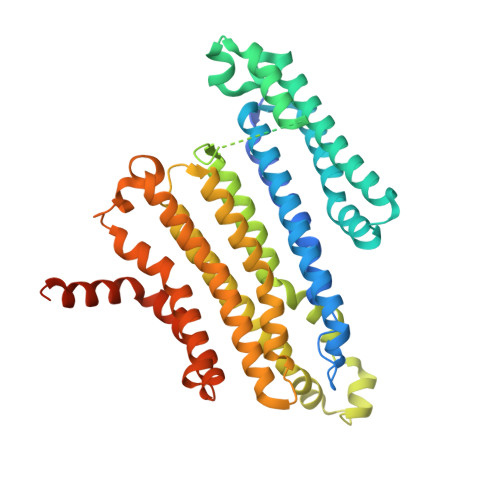Lysosomal LAMP proteins regulate lysosomal pH by direct inhibition of the TMEM175 channel.
Zhang, J., Zeng, W., Han, Y., Lee, W.R., Liou, J., Jiang, Y.(2023) Mol Cell 83: 2524-2539.e7
- PubMed: 37390818
- DOI: https://doi.org/10.1016/j.molcel.2023.06.004
- Primary Citation of Related Structures:
8FY5, 8FYF - PubMed Abstract:
Maintaining a highly acidic lysosomal pH is central to cellular physiology. Here, we use functional proteomics, single-particle cryo-EM, electrophysiology, and in vivo imaging to unravel a key biological function of human lysosome-associated membrane proteins (LAMP-1 and LAMP-2) in regulating lysosomal pH homeostasis. Despite being widely used as a lysosomal marker, the physiological functions of the LAMP proteins have long been overlooked. We show that LAMP-1 and LAMP-2 directly interact with and inhibit the activity of the lysosomal cation channel TMEM175, a key player in lysosomal pH homeostasis implicated in Parkinson's disease. This LAMP inhibition mitigates the proton conduction of TMEM175 and facilitates lysosomal acidification to a lower pH environment crucial for optimal hydrolase activity. Disrupting the LAMP-TMEM175 interaction alkalinizes the lysosomal pH and compromises the lysosomal hydrolytic function. In light of the ever-increasing importance of lysosomes to cellular physiology and diseases, our data have widespread implications for lysosomal biology.
Organizational Affiliation:
Department of Physiology, University of Texas Southwestern Medical Center, Dallas, TX, USA; Department of Biophysics, University of Texas Southwestern Medical Center, Dallas, TX, USA.



















